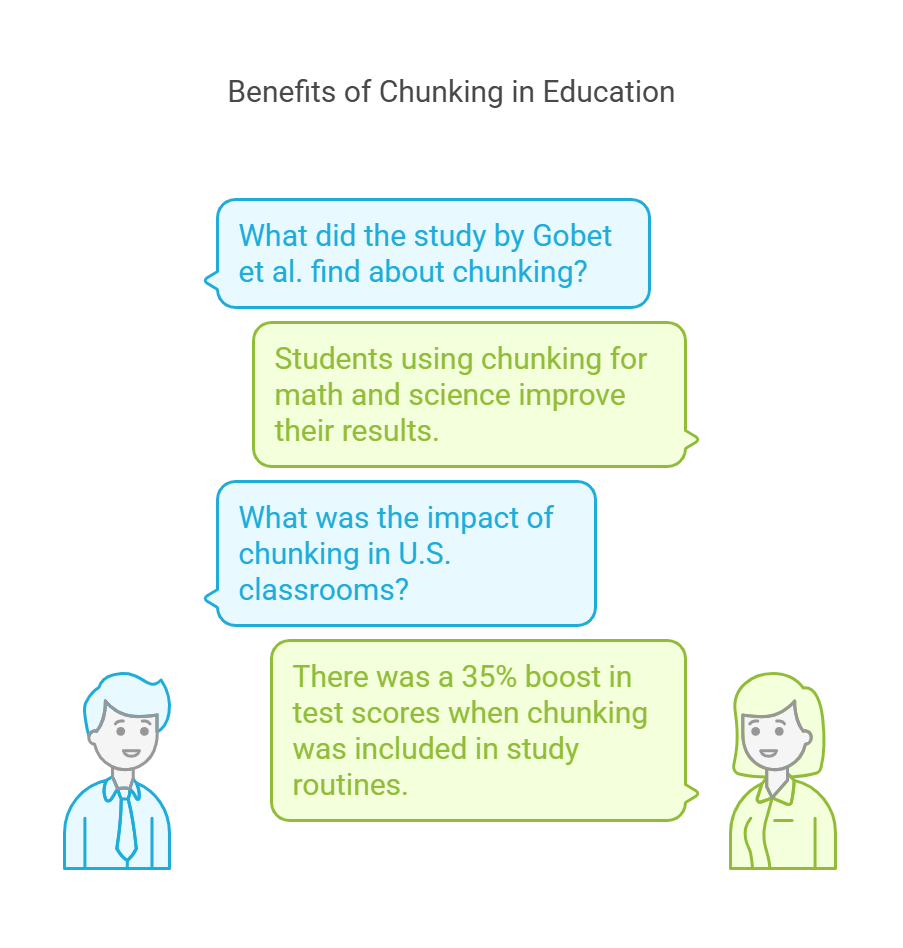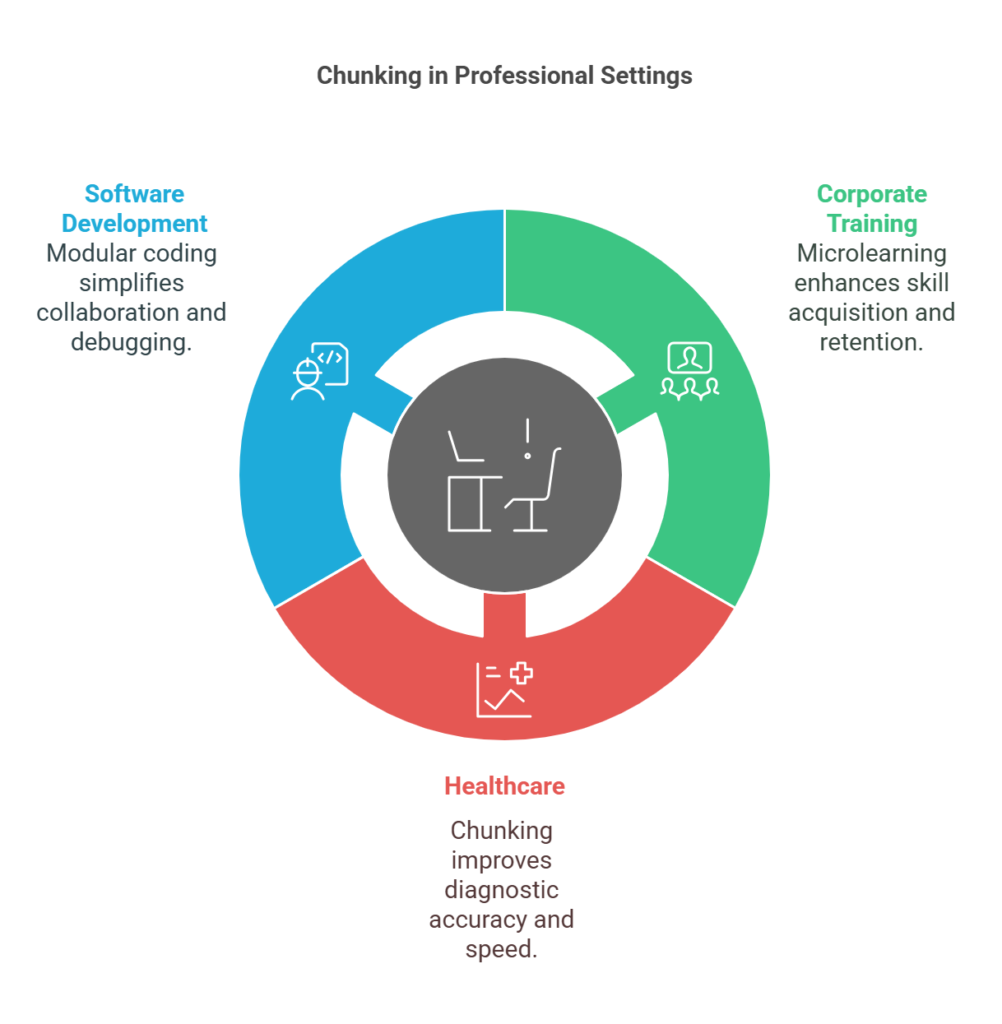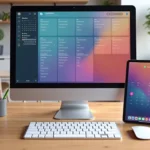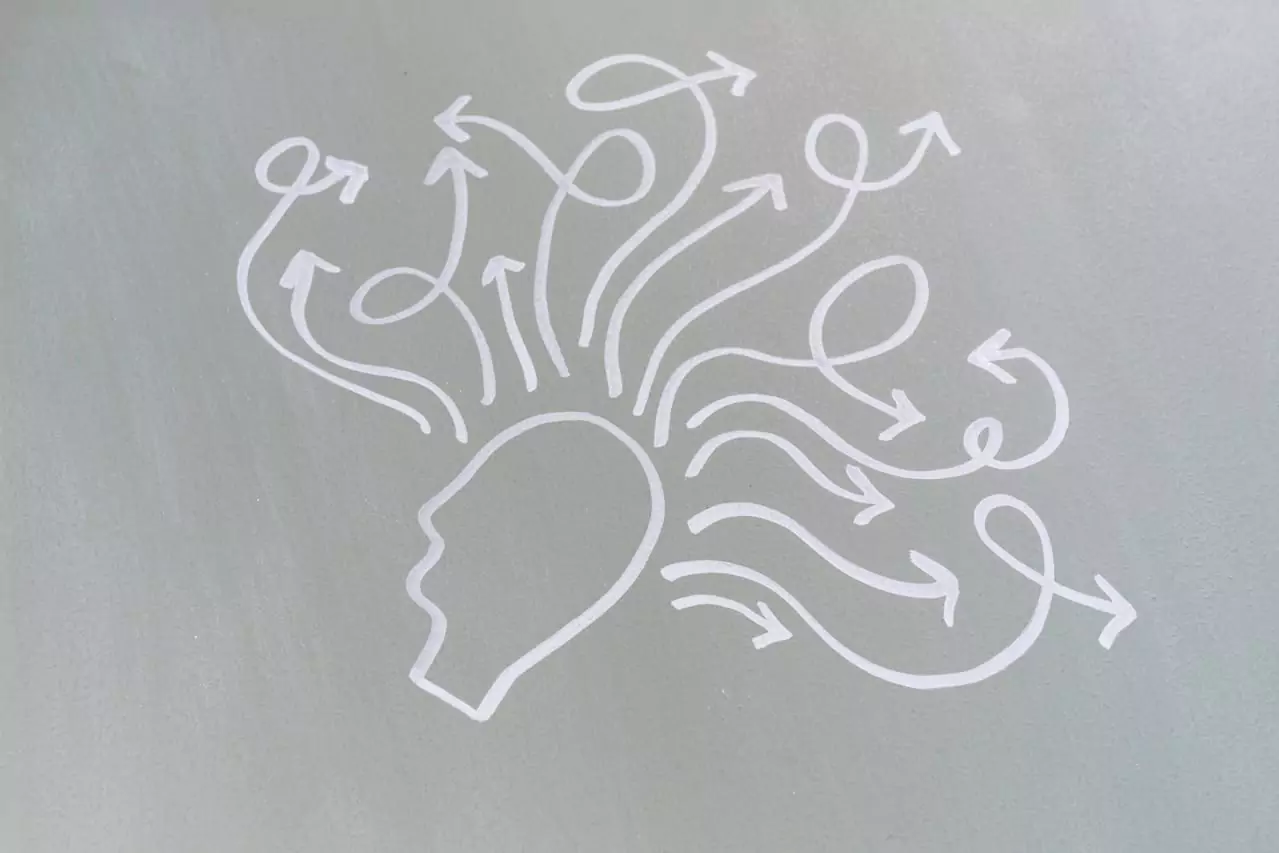Chunking—organizing information into bite-sized, manageable groups—is one of the simplest yet most powerful strategies for learning and problem-solving. Coined by psychologist George Miller in the 1950s, this approach has proven invaluable in education, corporate training, and even coding. Let’s explore how chunking is used differently worldwide and why it’s such a game-changer.
How Schools Use Chunking Around the World
Chunking isn’t just a fancy word—it’s a game-changing strategy that makes learning easier by breaking big tasks into smaller, bite-sized pieces. And depending on where you are in the world, teachers and students use it in different, creative ways. Let’s take a look!

1. Western Education: Breaking It Down With Tech and Logic
In the U.S. and other Western countries, chunking is often a go-to method to simplify tricky subjects. Teachers love it for things like reading and math.
- Phonics Made Easy: Kids learning to read are taught to break words into smaller sounds. For example, “cat” becomes “c-a-t,” making it easier to learn.
- Tech to the Rescue: Apps like Duolingo use chunking to teach languages by introducing words in small, related groups. Want to learn colors? You’ll get “red, blue, and yellow” all at once so they stick better.
Fun Fact: A study by Gobet et al. found that students who use chunking for math and science, like breaking down physics problems into steps, actually get better results. In fact, U.S. classrooms saw a 35% boost in test scores when chunking was part of the study routine.
2. Asian Education: Mastery Through Repetition

In countries like Japan and China, chunking is baked into the culture of learning, where repetition and structure are king.
- Math Patterns: Japanese students tackle math by spotting patterns and breaking problems into chunks they practice over and over until it’s second nature.
- Art with Precision: In Chinese calligraphy, kids memorize the strokes by grouping them into smaller, manageable sets. This makes learning the complex characters way less overwhelming.
Did You Know? A study in Applied Cognitive Psychology found that Japanese students consistently outperform their Western counterparts in chunking-heavy tasks, thanks to a curriculum built on repetition and structured practice.
3. Europe’s Innovative Spin: Learning Across Subjects
Scandinavian countries, known for their creative teaching styles, have taken chunking to the next level with cross-subject learning.
- Real-World Projects: Instead of teaching subjects separately, students might work on a project that combines math, geography, and science all in one. For example, analyzing environmental data becomes a single, connected lesson.
Why It Works: This kind of thematic chunking encourages big-picture thinking and makes lessons feel more relevant to real life.
How Chunking Transforms the Workplace
Chunking isn’t just for classrooms—it’s a total game-changer in professional settings too. Whether it’s training employees, saving lives, or writing code, chunking helps simplify complex tasks, boost efficiency, and reduce mental strain. Here’s how different industries are using it:

1. Corporate Training: Bite-Sized Learning for Big Results
In today’s fast-paced workplaces, no one has time to sit through endless lectures or read thick manuals. That’s where microlearning comes in. Companies like Google are breaking training programs into short, focused modules to teach employees new skills without overwhelming them.
- Why It Works: When information is delivered in smaller, digestible chunks, employees learn faster and retain more. Think of it like snacking instead of gorging—it’s easier to process and leaves you feeling more energized.
- Research Backs It Up: Cognitive models like EPAM/CHREST show that chunking speeds up learning by helping people understand technical concepts more quickly.
Example in Action: Imagine learning a new software tool. Instead of tackling everything at once, a chunked approach might cover one feature per session, making it way easier to follow and apply.
2. Healthcare: Faster, Smarter Decisions

In high-stress environments like hospitals, every second counts. Medical professionals use chunking to group symptoms into diagnostic categories, which helps them spot patterns quickly and make life-saving decisions.
- Why It’s Crucial: Emergencies aren’t the time to process loads of scattered information. By chunking, doctors and nurses can narrow down possibilities and act fast.
- Real-World Results: A 2019 study in medical education found that chunking-based diagnostic training cut error rates by 30% in high-pressure situations. That’s a huge win when lives are on the line.
Example in Action: A patient arrives with chest pain, shortness of breath, and sweating. Instead of analyzing each symptom separately, a chunked approach groups them as potential signs of a heart attack, speeding up diagnosis.
3. Software Development: Breaking Down Complexity
If you’ve ever peeked at a programmer’s screen, you know how overwhelming it looks. But coders use chunking every day to simplify their work by breaking complex algorithms into smaller, reusable blocks.
- Why It’s Effective: Chunking makes debugging easier and ensures team members can collaborate smoothly by following standardized structures.
Example in Action: Say a developer is building an app. Instead of writing one massive block of code, they’ll chunk it into parts—like login features, user profiles, and notifications. This modular approach lets them tweak or fix one section without messing up the whole thing.
The Science of Chunking: Why It Works Everywhere
Ever wonder why breaking things into smaller parts makes them so much easier to handle? It all comes down to how our brains are wired. Chunking’s success lies in its alignment with our cognitive limits.

Research in Trends in Cognitive Sciences demonstrates that short-term memory can handle about 7 items at a time. Chunking reduces cognitive load, enabling faster information retrieval and better retention
Reduces Cognitive Load
Chunking cuts down the mental effort needed to process information. Instead of focusing on 10 random facts, your brain only has to handle 2 or 3 well-organized groups.
Improves Retention
By organizing data into meaningful units, chunking creates stronger mental associations. This helps transfer information from short-term to long-term memory, where it sticks around longer.
Speeds Up Recall
Chunking creates a “map” in your mind, so when you need to retrieve information, you’re not searching aimlessly. You know exactly where to look.
A study even found chunking boosts memory by 20%! It’s like giving your brain a cheat sheet.
Future Directions and Challenges
How AI Is Taking Chunking to the Next Level
Okay, imagine this: a tool that knows exactly how you learn best and tweaks lessons just for you. That’s where AI (artificial intelligence) comes in. AI-powered learning systems, like Duolingo for languages, break things into bite-sized pieces and adjust them based on how well you’re doing. It’s like having a personal coach who knows when to challenge you and when to ease up.
Let’s say you’re learning a new software for work. An AI tool could figure out what you’ve already nailed and focus only on what you need help with. It’s chunking, but smarter and more personalized.
The Downsides of Chunking
Chunking’s awesome, but it’s not perfect. If you break things into too many tiny pieces, you might miss the big picture. It’s like taking a puzzle, focusing on just a few pieces, and forgetting to see how they fit into the whole picture.
The Takeaway:
Chunking is a tool, not a magic fix. You still need to connect the dots and dive deeper when the subject calls for it. It’s great for learning the basics, but don’t stop there!
Why Teaming Up Globally Matters
Here’s the deal: chunking isn’t one-size-fits-all. Different cultures and education systems use it in their own unique ways. For example, in Asia, they focus on structured repetition—practicing something over and over until it sticks. In the West, there’s more emphasis on creative problem-solving and exploration. Both are effective in their own way, but imagine combining them into one super method!
What’s the Goal?
Global teamwork. If researchers and educators from all over the world join forces, they can create hybrid chunking techniques that work for everyone. Think of it as bringing the best of both worlds to classrooms and workplaces everywhere.
Conclusion
Chunking is already helping us learn faster and remember more, but it’s got even more potential. With AI making it personal, global collaboration making it smarter, and a bit of caution to keep it balanced, the future of chunking looks pretty exciting. It’s like upgrading from a flip phone to a smartphone—you’re keeping what works but adding all the cool new features!
FAQs
Can chunking be applied outside of academics?
Absolutely! Chunking is useful in daily life, like organizing tasks, managing time, or even planning meals.
How does stress impact learning and memory?
Stress can hinder focus and retention, making it harder to absorb and recall information.
What’s the difference between chunking and summarizing?
Chunking groups related information, while summarizing condenses content into its core ideas.
Can chunking help with long-term memory?
Yes, by grouping information into meaningful units, chunking aids in better storage and recall over time.
What are the best tools for practicing chunking?
Mind maps, flashcards, and bullet-pointed lists are great tools for chunking information effectively.
Studies and Research References:
- Research on Chunking’s Role in Memory and Cognitive Load:
- Source: Gobet et al., Trends in Cognitive Sciences
- Focus: Highlighted the role of chunking in improving memory and simplifying complex cognitive tasks.
- Link: Trends in Cognitive Sciences
- Chunking and Education in U.S. Classrooms:
- Source: Educational Psychology Journals
- Focus: Demonstrated a 35% boost in test performance when chunking techniques were applied.
- Link: Educational Psychology Journal
- Chunking in Japanese and Chinese Education:
- Source: Applied Cognitive Psychology
- Focus: Showed Japanese students outperform Western peers in chunking-heavy math tasks due to structured practice.
- Link: Applied Cognitive Psychology
- Healthcare Application of Chunking:
- Source: Cognitive Research: Principles and Implications in 2023
- Focus: Chunking-based diagnostic training reduced error rates by 30% in high-pressure medical settings.
- Link: Cognitive Research
- Coding and Algorithm Optimization Using Chunking:
- Source: EPAM/CHREST Cognitive Models
- Focus: Demonstrated how programmers use chunking to simplify complex algorithmic tasks.
- Link: EPAM Cognitive Models
- Global Cognitive Load Study:
- Source: Research in Trends in Cognitive Sciences
- Focus: Found that short-term memory can handle about 7 items at a time, reinforcing chunking’s effectiveness.
- Link: Trends in Cognitive Sciences







